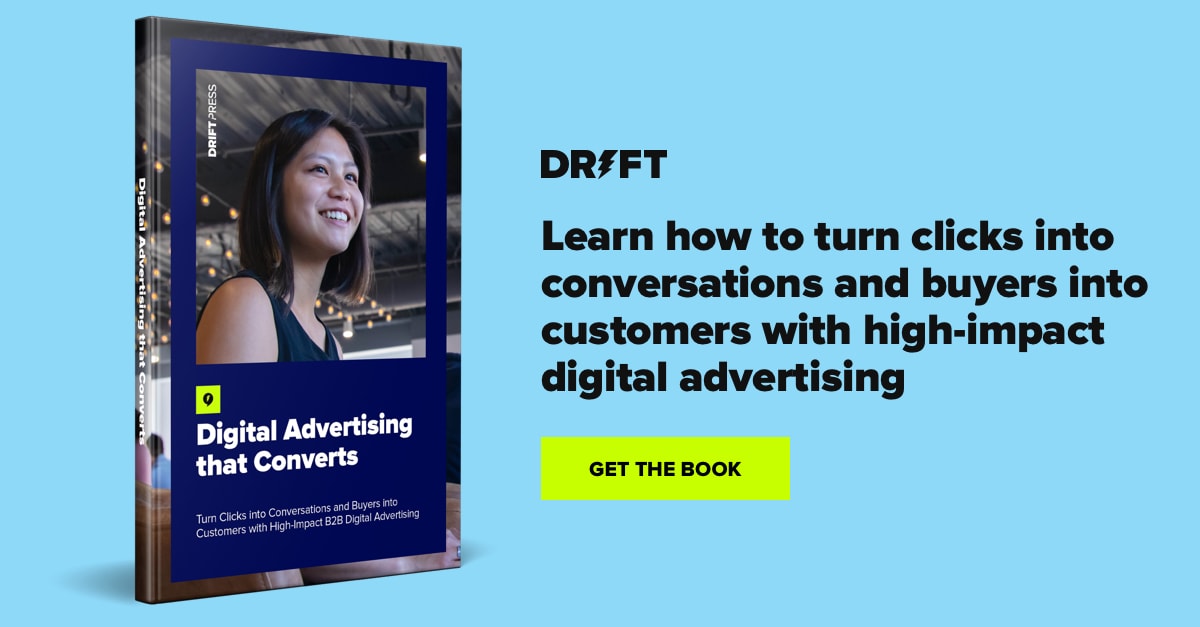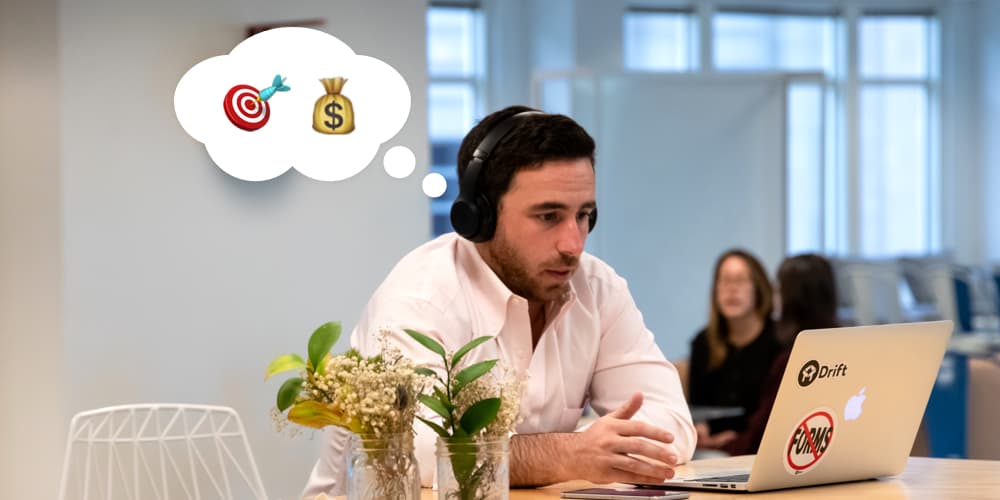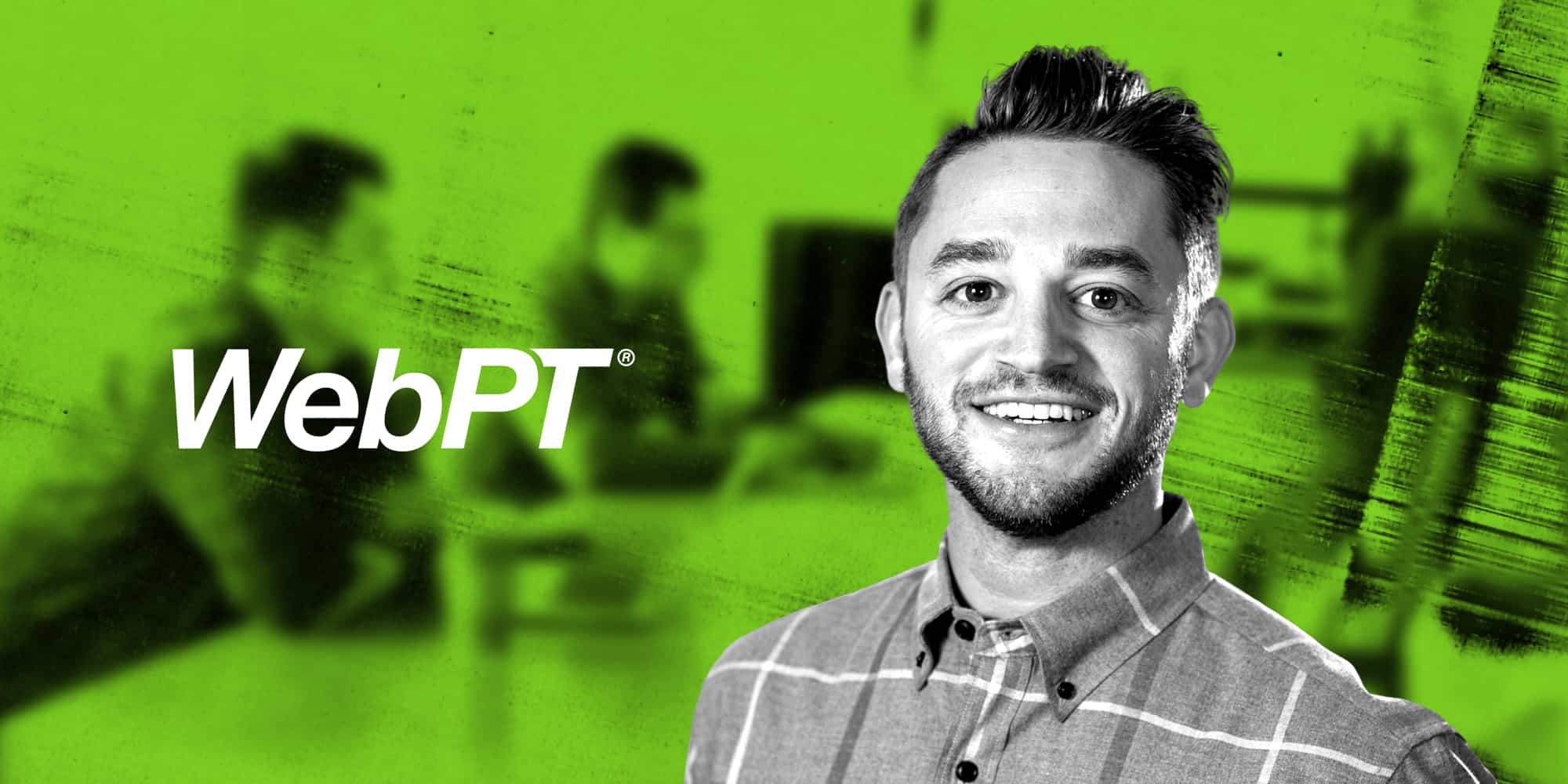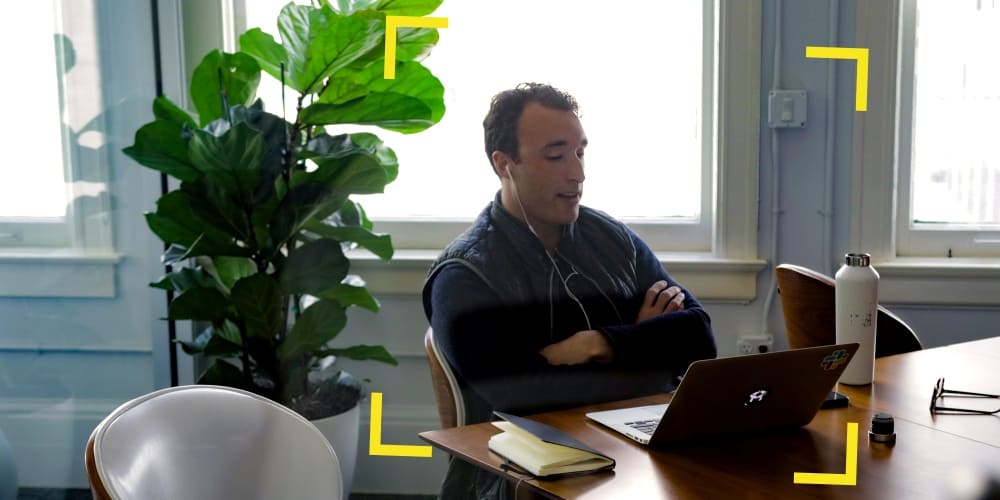Digital advertising is equal parts art and science. That means simply trusting your gut when running a high-impact digital advertising program isn’t an option. You need the data and the know-how to fail fast, win faster, and pivot quickly.
To help you create a B2B digital advertising program that turns clicks into conversations and buyers into customers, I reached out to two marketing experts at Adobe: Marissa Dacay, Senior Director of Global Enterprise Marketing & ABM COE, and Jeff Baran, Director of Enterprise Marketing, Digital COE & Demand Generation.
We chatted about the future of digital advertising, the impact of COVID on that future, and what great B2B digital advertising looks like today.
Editor’s Note: Marissa and Jeff, along with other leading digital advertising experts, shared these insights and more in Drift’s guide: Digital Advertising that Converts. Download a free copy of the book here.
1. How has digital advertising changed over the last five years? What innovations and buyer trends do you see driving change in the next five years?

Jeff Baran:
Buyer expectations around digital advertising have changed drastically over the past few years. Today’s buyers have higher expectations than ever for personalized, one-to-one conversations across all channels and devices. With the ability to capture rich customer data and access a consistent customer profile in real-time, marketers are able to segment customer and prospect data more effectively. They are also able to gain insights into the actions customers have recently taken online and offline. Activating marketing campaigns with these insights enable marketing teams to deliver digital advertising and digital experiences that meet and exceed buyer expectations. Compelling and relevant offers can be served up across channels at every stage of the buyer’s journey.
The high degree of personalization that can be achieved today has caused a shift in digital advertising over the last few years – turning a once disruptive process into a more relevant, on-going conversation between companies and their customers. As IT and Marketing organizations bring disparate data sets together and activate highly personalized marketing campaigns, this trend will continue. The result will benefit buyers with more timely and relevant offers and will benefit brands with the ability to attract new customers and retain existing customers more effectively.

Marissa Dacay:
Data governance and data foundations will evolve significantly over the next several years as businesses adopt a first-party data infrastructure. There is still much to discover, but acquiring or curating the right building blocks for the future can and should start now.
2. How do you believe COVID has impacted B2B digital advertising this year? What changes do you see as temporary vs. permanent?

Jeff Baran:
One of the many pivots B2B companies made this year because of COVID-19 was shifting in-person events into online, virtual events, webinars, and other digital channels. As we pivoted to live virtual events and webinars, we found success through offering recorded event content online after virtual events to continuously drive engagement – as well as promoting relevant recording content in our digital campaigns.
We expect many events that were traditionally offered as in-person-only experiences to have a stronger digital component going forward in terms of the live event and post-event experience.
3. What qualities define a great B2B digital ad strategy? What challenges have you faced scaling this strategy at the enterprise level?

Jeff Baran:
A few qualities that are important to our B2B digital advertising strategy include:
- Well-defined buyer personas and customer journeys
- Compelling offers designed for each stage of the buyer’s journey
- Messaging that resonates with the buyer and addresses the key questions and challenge(s) they may be facing at each stage of the buying process
- Integrated digital approaches that utilize a combination of channels to achieve goals and provide marketing and message consistency across channels
- Audience segmentation and customer profile insights to enable personalization
- The ability to track and measure offer, channel, program, and campaign results and ROI

Marissa Dacay:
In addition to all the great things Jeff mentioned, a great B2B digital advertising strategy is one that is dynamic – and adjusts to meet the customer where they are in their buying journey. Ultimately, this means that the advertising journey is operating from the same core engagement dataset and dynamically adjusting creative and content aligned to how your customer is engaging. A great B2B digital advertising strategy augments and compliments what the rest of your marketing tactics are doing – across email, webinars, events, etc. It can be not only your main acquisition vehicle, but the thing that keeps your brand or offering top-of-mind.
4. How does the level of personalization matter when talking about digital advertising for ABM target accounts?

Jeff Baran:
The level of personalization plays an important role in an account-based approach. Developing distinct and personalized messaging, content and creative assets, email, and landing pages to fuel personalized campaigns requires extra time and bandwidth. We employ a strategy where the level of personalization is correlated with the degree of account segmentation.
For example, we use a low level of personalization with broad account segmentation and a higher degree of personalization with more focused segmentation (resulting in a smaller number of accounts). We build hyper-personalized campaigns for single accounts. This approach is used to ensure resources are maximized through building highly personalized campaigns for our focus accounts and key accounts.
5. Experimentation is key in marketing. How do you drive and manage experimentation on your team?

Jeff Baran:
We intentionally allocate funding and bandwidth for experimentation and testing. We hold monthly performance readouts where the results of the experimentation and testing are presented and learnings are captured. Digital campaigns are then optimized based on performance.
6. B2B sales is changing. More stakeholders. More decision-makers to consider. And thus, more pain points to go after. How do you take an ever-evolving buying committee into consideration as part of your digital strategy?

Jeff Baran:
We focus on delivering useful content through a combination of digital channels to the buying committee at accounts where we have an open opportunity. As the buying committee moves through the buying process, we provide offers through our digital campaigns that speak to the challenges buying committee members may face and the questions they may need to answer at each stage. The personas that make up the buying committee are considered as well as (whether the account is an existing or new customer).

Marissa Dacay:
Over the last several years, as we’ve matured our ABM strategy and measurement, we’ve invested in a buying center and persona-level insights at the account level. Through these insights, we’re able to track how engaged practitioners, decision-makers, and power users are across the buyer’s journey and also make it easier to understand the reach, frequency, and cadence in which they engage with our content and programs.
With this data, we’re also able to benchmark optimal and expected engagement at each persona-level and across various tactics and drive to that threshold through our marketing. This has been critical in understanding what good looks like when it comes to how much various personas and levels of power should be engaging with touchpoints to create pipeline and close business.
7. What are some of the most successful campaigns your team has run in the last year? Why do you believe they were so successful?

Marissa Dacay:
This spring, shortly after shelter-in-place mandates went into effect, we pivoted our campaigns from horizontal, product-based to industry and sub-industry-based. We quickly realized that some industries were being impacted by COVID-19 very differently and we needed to be mindful of that and focus on being helpful to customers. Whether they needed support to keep the lights on, to scale at a rapid pace, or drive accelerated digital transformation.
After making the pivot to industry-based campaigns, we saw a 3X lift in engagement and a 30% increase in response rates – showing that these tailored messages were resonating.
Final Thoughts
A huge thanks to the Adobe team for sharing how marketers can get more out of their digital advertising programs. If you’d like additional insights and best practices, check out Drift’s guide: Digital Advertising that Converts.









